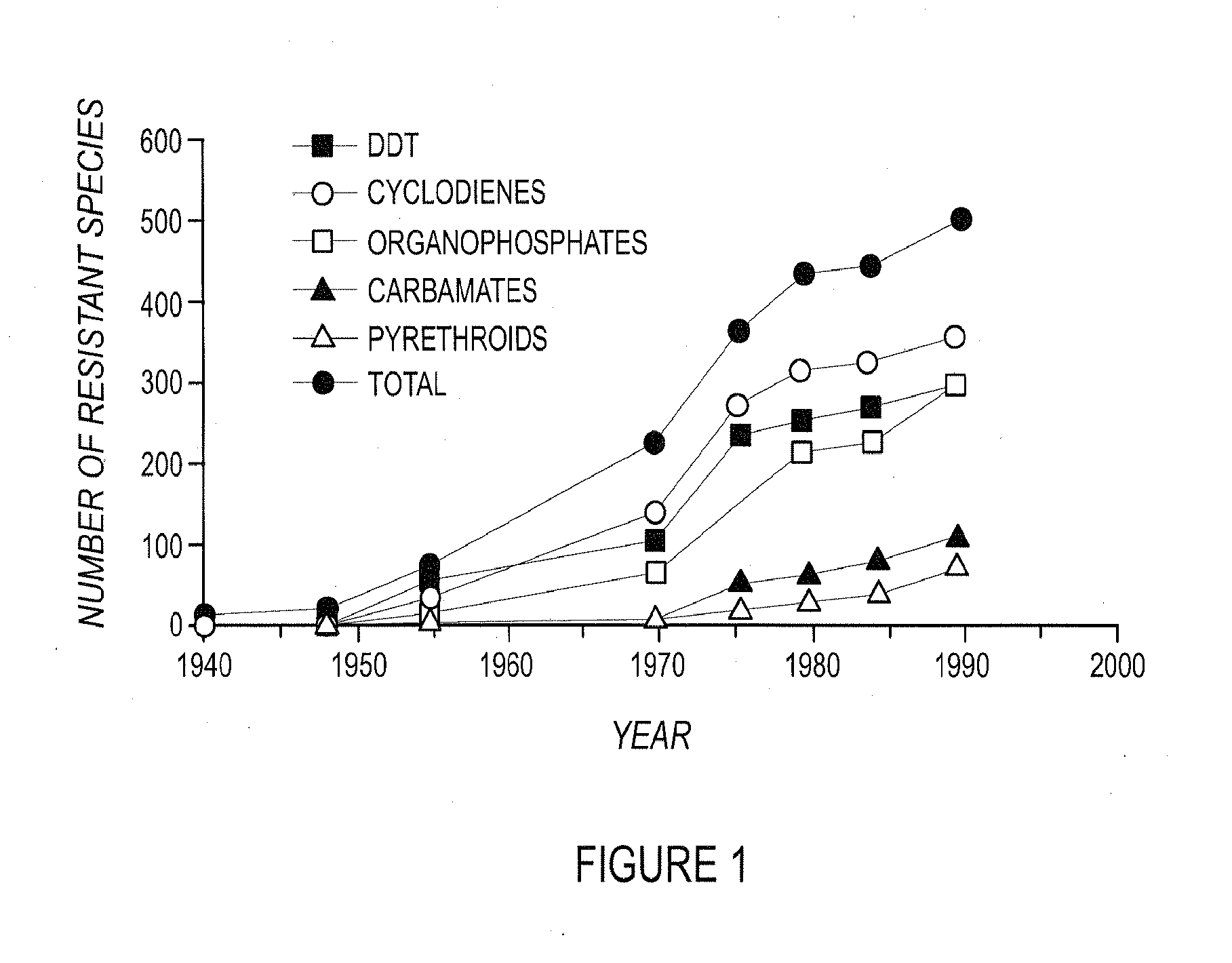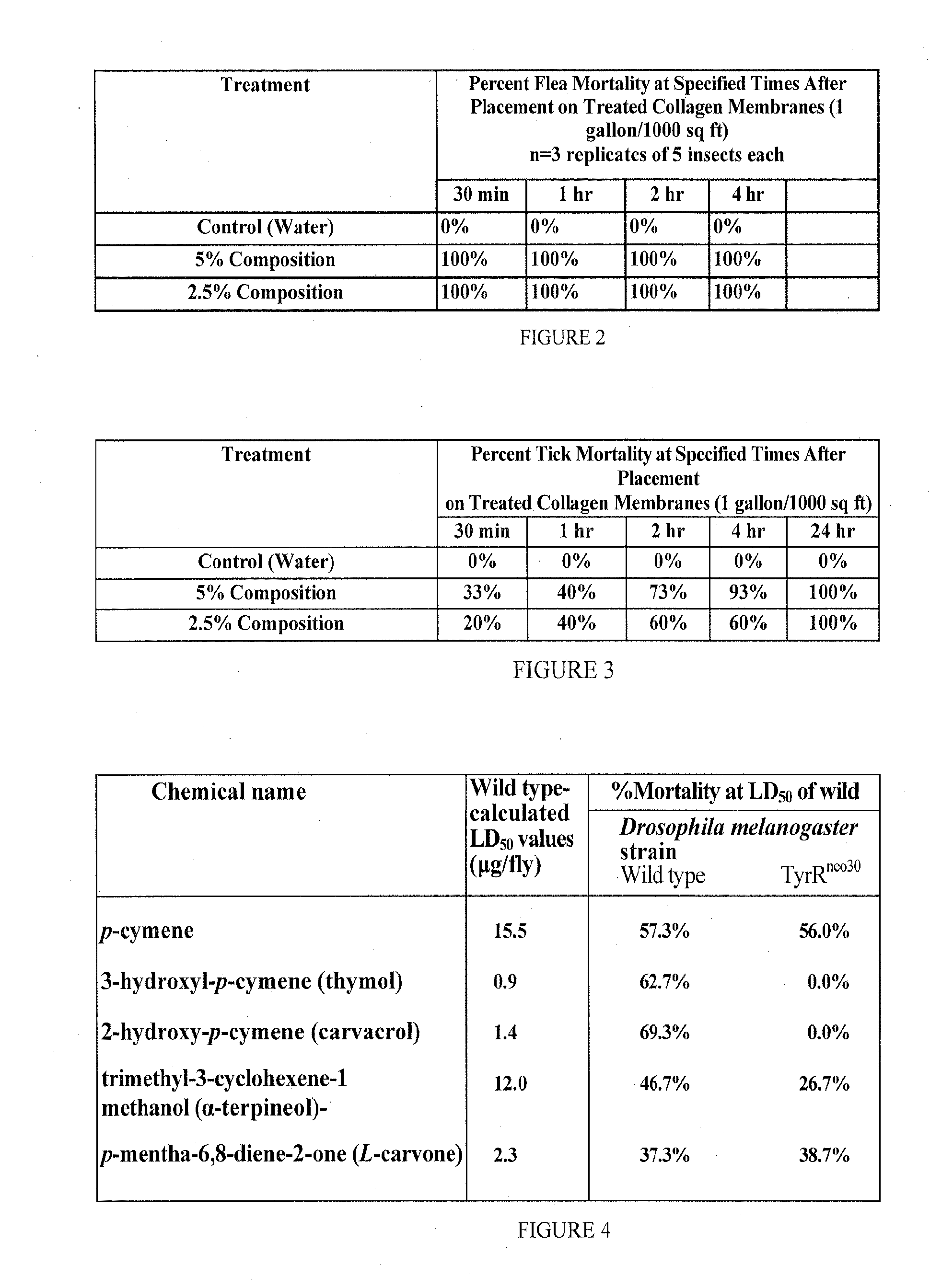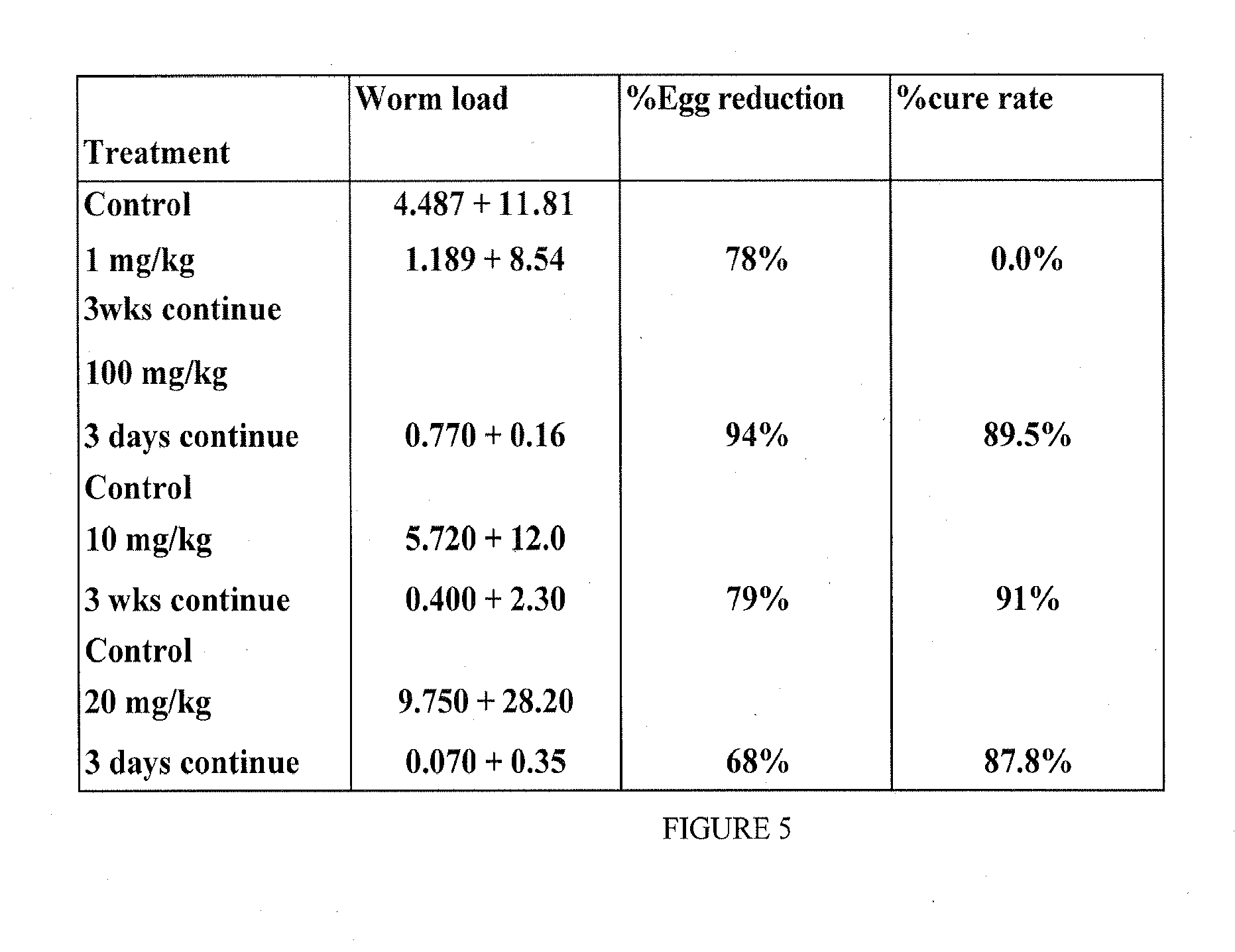Pest-control compositions and methods having high target and low non-target activity
- Summary
- Abstract
- Description
- Claims
- Application Information
AI Technical Summary
Benefits of technology
Problems solved by technology
Method used
Image
Examples
example 1
An insect control composition was prepared according to the following:
IngredientCASW / WThyme Oil White8007-46-320.6Isopropyl myristate110-27-034.3Wintergreen Oil45.1
The composition was tested for insect control potential against fleas by adding the composition at various concentrations to collagen membranes (1 gallon per 1000 sq. ft.), and then placing fleas (n=3, replicates of 5 fleas each) upon the membranes. Flea mortality was measured at the time points indicated in FIG. 2.
Next, the composition was tested for insect control potential against ticks by adding the composition at various concentrations to collagen membranes (1 gallon per 1000 sq. ft.), and then placing fleas (n=3, replicates of 5 ticks each) upon the membranes. Tick mortality was measured at the time points indicated in FIG. 3.
The data reflects the selectivity of the test composition, as the percent mortality for fleas was 500% higher than the percent mortality for ticks at the 30 minute time point.
example 2
LD50 values of tested chemicals (determined against wild type Drosophila) were topically applied against wild type and tyramine receptor mutant (TyrRneo30) strains. Mortality was determined 24 h after treatment. Data are the average of three replicates, 5 flies per replicate. This experiment was repeated five times.
The data (FIG. 4) shows the selectivity of the thymol and carvacrol test chemicals, as the chemicals did not affect Drosophila expressing a mutant form of the tyramine receptor.
example 3
A parasite-control test composition was prepared according to Table 1.
Mice were treated with a test composition at various dose levels for various time periods (see FIG. 5). Briefly, test composition was administered in various amounts (1, 10, or 100 mg / kg of body weight) to mice for a period of either three days or three weeks, followed by infection of each animal with 200 viable eggs of H. nana. During the 2 week incubation period following infection, the animals continued to be treated with the blend compositions at the various test amounts. During the third week post-infection, the stool of the treated and infected mice was examined, and the mice were then sacrificed at the end of the third week to ascertain cure rate. A background infection number was established by infecting untreated animals with 200 viable eggs of H. nana.
The resulting data indicated that despite the compositions' effectiveness against the H. nana parasite, there were no significant differences between trea...
PUM
 Login to View More
Login to View More Abstract
Description
Claims
Application Information
 Login to View More
Login to View More - R&D
- Intellectual Property
- Life Sciences
- Materials
- Tech Scout
- Unparalleled Data Quality
- Higher Quality Content
- 60% Fewer Hallucinations
Browse by: Latest US Patents, China's latest patents, Technical Efficacy Thesaurus, Application Domain, Technology Topic, Popular Technical Reports.
© 2025 PatSnap. All rights reserved.Legal|Privacy policy|Modern Slavery Act Transparency Statement|Sitemap|About US| Contact US: help@patsnap.com



